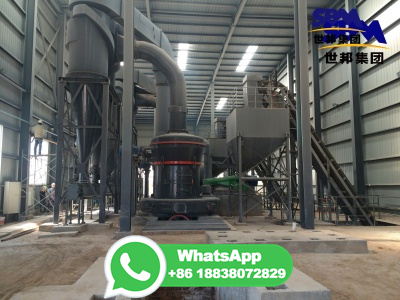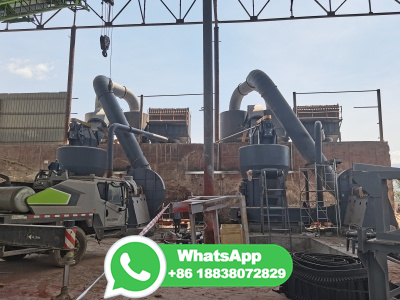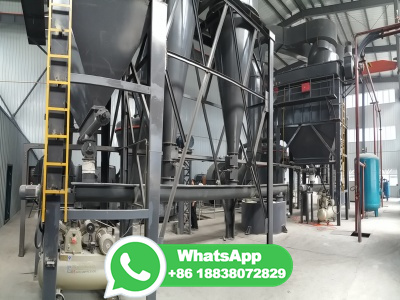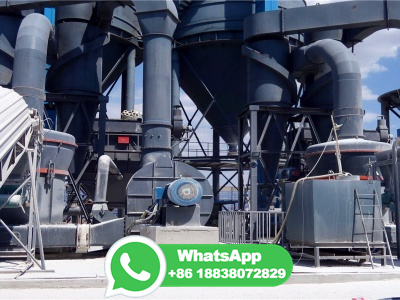
WEBFeb 2, 2023 · Coal formation. Image via Kentucky Geological Survey. The transformation of trees into coal then became a story of heat, pressure, and time. First, the mass transformed to peat, an accumulation of ...
WhatsApp: +86 18203695377
WEBA coal mine mantrip at Lackawanna Coal Mine in Scranton, Pennsylvania Coal miners exiting a winder cage at a mine near Richlands, ia in 1974 Surface coal mining in Wyoming, A coal mine in Frameries, Belgium. Coal mining is the process of extracting coal from the ground or from a mine. Coal is valued for its energy content and .
WhatsApp: +86 18203695377
WEBPeat – Stage One. Peat is the first stage in the formation of coal. Normally, vegetable matter is oxidized to water and carbon dioxide. However, if plant material accumulates underwater, oxygen is not present and so only partial decomposition occurs. This incomplete destruction leads to the accumulation of an organic substance called peat.
WhatsApp: +86 18203695377
WEBOct 3, 2019 · The theory of biogenic origin of peat, coal and oil were proposed by M. V. Lomonosov. The process of thoracoplasty does not end, but happens all the time. The average rate of formation and accumulation of peat is different and depends on the prevailing source of plant groups, geographical and climatic zonality, the hydrologic and .
WhatsApp: +86 18203695377
WEBPeat always emerges in still bodies of water such as shallow lakes. The peat mosses die and slowly sink to the floor of the lake, accumulating in layers over time. But these layers remain covered in water, which keeps air from reaching the floor. This slows the decomposition process of the dead plant residue.
WhatsApp: +86 18203695377
WEBMar 24, 2021 · Peat forms during glacial periods, when the polar ice sheets grow and the sea level falls. Then, when the ice melts and the sea floods into the swamps, the peat is preserved, locked away beneath new marine sediment. In some places, the rock record attests to dozens of these repeating marine and nonmarine layers, known as cyclothems.
WhatsApp: +86 18203695377
WEBPeat is an ideal fuel and has therefore been used for centuries to heat and dry the barley for whisky production. Peat was generally used where there were no trees, coal or other sources of heat. Today peat is very deliberately used to produce particularly smoky single malts, and on occasion grains.
WhatsApp: +86 18203695377
WEBOver time, the formation of peat is often the first step in the geological formation of fossil fuels such as coal, particularly lowgrade coal such as lignite. ... The most common method to extract peat during the 19th and 20th centuries was peat cutting, a process where the land is cleared of forest and subsequentially drained.
WhatsApp: +86 18203695377
WEBAug 17, 2017 · An Aerosol Chemical Speciation Monitor (ACSM) was deployed to study the primary nonrefractory submicron particulate matter emissions from burning of commercially available solid fuels (peat, coal ...
WhatsApp: +86 18203695377
WEBThe formation of peat is a relatively short biochemical process under the influence of aerobic microorganisms in the surface depths of the deposits during periods of low subsoil water. As the peat which is formed in the peatproducing layer becomes subjected to anaerobic conditions in the deeper layers of the deposit, it be preserved and shows ...
WhatsApp: +86 18203695377
WEBOct 19, 2023 · Peatlands Thick, spongy layers of histosol eventually form peat. Peat is a fossil fuel that is the first stage in the long process of plant material turning into coal. Ancient bog plants, mostly sphagnum moss, are the fossils in peat. People have harvested peat for thousands of years.
WhatsApp: +86 18203695377
WEBFeb 15, 2020 · Abstract. Peat depositional environments, the sites where and conditions under which peat accumulates, significantly influence a resultant coal's physical properties, chemical composition, and coal utilization behavior. Recognition of peat depositional environments for coal is a challenging endeavor because coal's observed .
WhatsApp: +86 18203695377
WEBSep 27, 2023 · "The Lincoln County process is charcoalfiltering the whiskey," he says. "I thought, 'Well, let's just figure out a way of peatfiltering — essentially peatinfusing — the whiskey.'"
WhatsApp: +86 18203695377
WEBMay 1, 2024 · Usually, businesses produce activated carbon (AC) from finite resources like coal, lignite, peat, and petroleum byproducts, which can incur high costs and necessitate elaborate regeneration processes [26]. By 2018, the demand for activated carbon had surged to reach million metric tons [27]. Due to this escalated demand and .
WhatsApp: +86 18203695377
WEBAs swamp materials collect on the floor of the swamp, they turn to peat. As lithifiion occurs, peat turns to lignite. With increasing heat and pressure, lignite turns to subbituminous coal, bituminous coal, and then, in a process like metamorphism, anthracite. Anthracite is the highest metamorphic grade and most desirable coal since it ...
WhatsApp: +86 18203695377
WEBCoal gasifiion. In industrial chemistry, coal gasifiion is the process of producing syngas —a mixture consisting primarily of carbon monoxide (CO), hydrogen ( H2 ), carbon dioxide ( CO2 ), methane ( CH4 ), and water vapour ( H2O )—from coal and water, air and/or oxygen. Historically, coal was gasified to produce coal gas, also known ...
WhatsApp: +86 18203695377
WEBJun 29, 2012 · The process of coal formation is still taking place today, says Bailey. "The precursor to coal is called peat, and that is just uncompressed plant matter." Peat accumulates in wet swampy ...
WhatsApp: +86 18203695377
WEBAug 18, 2021 · Diagenesis of Coal. The process that makes peat or sapropelite turned into lignite or saprodite is called the diagenesis of coal. Diagenesis occurs at the initial stage of coalifiion. When the peat or sapropelite is covered by the upper deposits and buried into the ground due to the basin subsidence, the effects of compression ...
WhatsApp: +86 18203695377
WEBAbstract. This chapter examines the organicrich soil profiles of peat. It first considers the process of peat formation by organic matter through sedentation and sedimentation before comparing the organic versus mineral matter content of peat. It then describes three commonly used techniques for sampling the peat profile: the Russian ...
WhatsApp: +86 18203695377
WEBJan 19, 2023 · The area where the coal beds may have developed must have been elevated to allow plant growth to develop (areas near seacoasts or lowlying areas near streams remain moist enough for peat to form). The process of coal formation in thick peat deposits developed in places where the following conditions prevailed: slow, continuous .
WhatsApp: +86 18203695377
WEBNov 18, 2020 · When coal, and after that coke, became an alternative to the heavily aromatic peat, many distilleries converted. ... Did all distilleries move away from peat in the malting process? Many distilleries shunned the trend of moving to coal and then coke and decided to stay with peat. This was mostly dependent on the loion of the distillery.
WhatsApp: +86 18203695377
WEBJul 24, 2019 · The two processes underlying this image that turn peat into coal are: Peatifiion and coalifiion. Added 26 days ago|5/16/2024 12:17:27 AM. 39,217,181. questions answered. Sh are your journ ey. W I N D O .
WhatsApp: +86 18203695377
WEBStudy with Quizlet and memorize flashcards containing terms like Which fossil fuel is rich in methane?, Which fossil fuel is formed in different types that depend on the amount of heat, pressure, and time?, Which of the following statements is true about the distribution and storage process for natural gas? and more.
WhatsApp: +86 18203695377
WEBJun 1, 1989 · Peat is a predominantly organic material derived from plants that accumulates in certain types of ecosystems. Its formation is dependent on an excess of local plant productivity over the respiratory processes of organisms. ... Coal and Peat Fires: a Global Perspective, 2015, pp. 3973. Ecological and environmental transition across the .
WhatsApp: +86 18203695377
WEBRaw coke. Coke is a grey, hard, and porous coalbased fuel with a high carbon content. It is made by heating coal or oil in the absence of air. Coke is an important industrial product, used mainly in iron ore smelting, but also as a fuel in stoves and forges.. The unqualified term "coke" usually refers to the product derived from lowash and lowsulphur .
WhatsApp: +86 18203695377
WEBOct 26, 2017 · Coalifiion is a chemical process in which hydrogen and oxygen are lost from the original peat fool, increasing the ratio of carbon to other elements. This involves alteration to the remaining molecules of the material, in particular the conversion of lignin to vitrinite. Coalifiion is not an allornothing process: rather it produces coal ...
WhatsApp: +86 18203695377
WEBJan 1, 2020 · The four types of coal include peat, lignite (or brown coal), bituminous (or hard coal), and anthracite. The coal is classified in terms of the change it has undergone from peat to anthracite. The quality of coal is determined by the temperature, pressure, and length of time of formation. ... This CO 2 removal process from coal gasifiion ...
WhatsApp: +86 18203695377
WEBChapter contents: Nature of the fossil record – 1. Body fossils and trace fossils – 2. The process of fossilization ← – 3. Types of fossil preservation – 4. Completeness of the fossil recordTwo fundamental natural factors govern the process of fossilization:The environment where an organism materials that made up the organism's body .
WhatsApp: +86 18203695377
WEBCost considerations play a significant role in the decisionmaking process between coal and peat. Coal, being a widely traded commodity, often benefits from economies of scale, making it relatively affordable compared to other fossil fuels. The infrastructure and technology developed around coal extraction and utilization further contribute to ...
WhatsApp: +86 18203695377
WEBRank refers to steps in a slow, natural process called "coalifiion," during which buried plant matter changes into an ever denser, drier, more carbonrich, and harder material. The four ranks are: Anthracite: The highest rank of coal. ... The precursor to coal is peat. Peat is a soft, organic material consisting of partly decayed plant ...
WhatsApp: +86 18203695377
WEBJul 24, 2019 · What are the two processes underlying this image that turn peat into coal? A. Peatifiion and coalifiion B. Petrifiion and coalifiion C. Peatifiion and lignitigation D. Lignitigation and coalifiion
WhatsApp: +86 18203695377
WEBSep 14, 2017 · Coal is a naturally occurring sedimentary carbonaceous rock composed of at least 50% organic matter by weight, and 70% carbonaceous material by volume, mostly from the diagenesis (chemical and physical alteration) of plant material in buried peat (Schopf 1956, 1966; Alpern and DeSousa 2002 ). Coal is a solid hydrocarbon .
WhatsApp: +86 18203695377
WEBSep 1, 2013 · The purpose of this study was to experimentally test and compare the fast pyrolysis behavior of torrefied wood, peat, and two types of coal. The experiments were conducted in a laboratoryscale droptube reactor (DTR) at a temperature range of 700–900 ° pyrolysis, the sample particles were sieved with vibration sieves the opening .
WhatsApp: +86 18203695377